The Mosque of Rustem Pasha an Ottoman mosque located in Hasırcılar Çarşısı the Tahtakale neighborhood, of the Fatih district of Istanbul, Turkey.
Mosque of Rustem Pasha was designed by Ottoman imperial architect Mimar Sinan for Grand Vizier Damat Rustem Pasha (husband of one of the daughters of Suleiman the Magnificent, Princess Mihrimah). Built in 1560 by Sinan for Rüstem Paşa, son-in-law and grand vizier of Süleyman the Magnificent, it is a showpiece of the best Ottoman architecture and tilework, albeit on a small scale. It is thought to have been the prototype for Sinan’s greatest work, the Selimiye in Edirne. At the top of the two sets of entry steps there is a terrace and the mosque’s colonnaded porch. You’ll notice at once the panels of İznik faïence set into the mosque’s facade.
The interior is covered in similarly gorgeous tiles and features a lovely dome, supported by four tiled pillars. The preponderance of tiles was Rüstem Paşa’s way of signalling his wealth and influence İznik tiles being particularly expensive and desirable. It may not have assisted his passage into the higher realm, though, because by all accounts he was a loathsome character. His contemporaries dubbed him Kehle-i-Ikbal (the Louse of Fortune) because he was found to be infected with lice on the eve of his marriage to Mihrimah, Süleyman’s favourite daughter.
He is best remembered for plotting with Roxelana to turn Süleyman against his favourite son, Mustafa. They were successful and Mustafa was strangled in 1553 on his father’s orders. The mosque is easy to miss because it’s not at street level. There’s a set of access stairs on Hasırcılar Caddesi and another on the small street that runs right (north) off Hasırcılar Caddesi to the Golden Horn.
Exterior
The mosque was built on a high terrace over a complex of vaulted shops, whose rents were intended to financially support the mosque complex. Narrow, twisting interior flights of steps in the corners give access to a spacious courtyard. The mosque has a double porch with five domed bays, from which projects a deep and low roof supported by a row of columns
Interior
The Rüstem Pasha Mosque is famous for its large quantities of exquisite Iznik tiles, set in a very wide variety of beautiful floral and geometric designs, which cover not only the façade of the porch but also the mihrab, minbar, walls, columns and on the façade of the porch outside. These tiles exhibit the early use of a tomato-red color that would become characteristic of İznik pottery. Some of the tiles, particularly those in a large panel under the portico to the left main entrance, are decorated with sage green and dark manganese purple that are characteristic of the earlier ‘Damascus ware’ coloring scheme. No other mosque in Istanbul makes such a lavish use of these tiles.
The plan of the building is basically that of an octagon inscribed in a rectangle. The main dome rests on four semi-domes; not on the axes but in the diagonals of the building. The arches of the dome spring from four octagonal pillar two on the north, two on the south and from piers projecting from the east and west walls. To the north and south are galleries supported by pillars and by small marble columns between them.
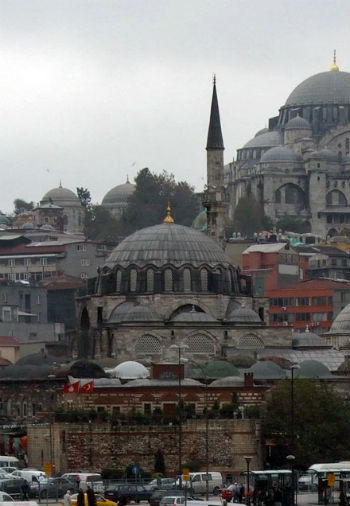
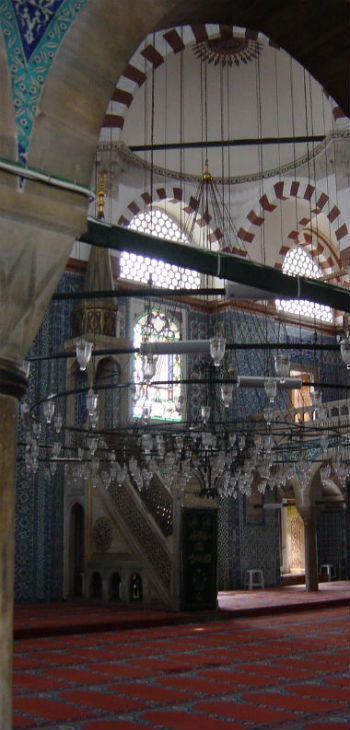
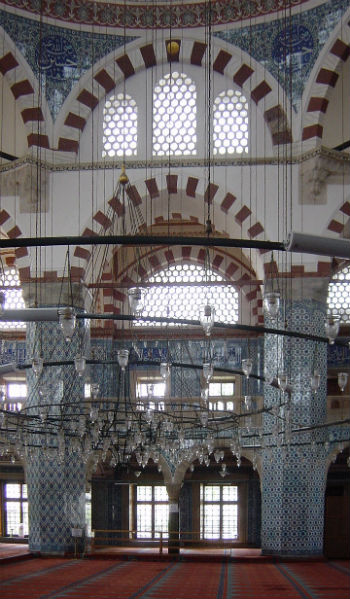
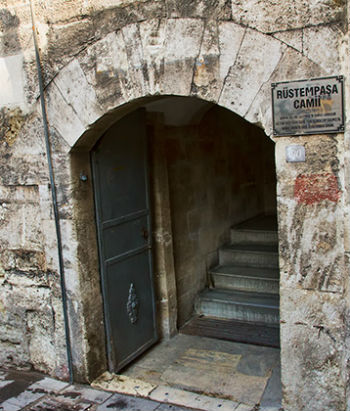
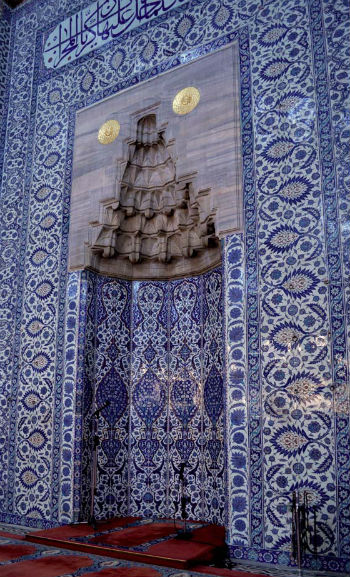


The mosque is opened to infidels when there is no service inside. Women have to cover their heads with scarfs. You can take as many pictures as you wish.
The mosque looks amazing from the outside. You have to remove your shoes to enter the mosque. I also had to cover my head before entering the mosque. The interiors were impressive with walls decorated with the beautiful and popular Iznik tiles in pretty floral and geometric patterns.
Well after seeing larger Mosques like the Blue Mosque this one wasn't that impressive.
Hard to find, but worth the effort; Iznik tiles are fabulous both inside and out, it's quieter than the Blue mosque and a restful place to be amid the hectic streets of the Spice Bazaar quarter.
It was the first mosque that we visited and because it was included in our Istanbul tour. There was only a few people when we got there, so we got to enjoy the place in silence. The tiles were really impressive!
After all the huge mosques which often look alike, this much smaller scale one is refreshing. And it has wonderful Isnik tiles that you will not see elsewhere. Easy to reach near the spice bazaar.
I enjoyed my visit here much more than my visit to the more famous Blue Mosque. It is on a smaller scale and there are fewer visitors. We arrived just after reopening after the lunchtime closure. The tiles are gorgeous and , unlike the Blue Mosque you can get right up close to admire them.
This mosque is definitely worthy of anyone's attention. Away from the tourist trail, it is nestled within the busy market surrounding it and can be a little difficult to find the small entrance, but once inside, you'll find a peaceful and quiet place of worship with amazing tile work and few or no tourists. It is a very different experience…
This is a mosque very close or even within the spice bazaar. If you go to Süleymaniye first, consider walking from there to the spice bazaar. Before getting into the oofed part of th spice bazaar, keep your eyes open for the entrance and then walk up the stairs from the caotic bazaar streets and into a peaceful court.
I preferred Blue Mosque and Suleymaniye Mosque, both of which are bigger, better maintained, and in my opinion more awe inspiring.